Magone/iStock/GettyImages
Roaster ovens do just about everything conventional ovens do, just in a smaller space, but their design can cause foods to scorch, which necessitates a few minor adjustments in cooking. Without a wire rack, the bottom of a roaster oven cooks food like a hot skillet does; in other words, if you load vegetables straight into the the cooking well, they cook like they would in a pan and tend to scorch.
Most wire racks that come with countertop roaster ovens are made to handle turkeys, not chopped vegetables, which often fall through the spaces. Avoid scorching the vegetables by using a cooking liquid or a different type of rack.
Heat the roaster oven to 325F. Take the cooking well out of the roaster oven before you turn it on. You can go as high as 375F, but 325F works for just about everything.
Cut the vegetables in approximately the same size pieces. You can't make every piece identical, but you can get in the ballpark; 3/4- to 1 1/2-inch pieces work well. Toss the vegetables with olive oil, kosher salt and freshly ground black pepper, or your favorite herb-and-spice mix.
Sear the vegetables in a saute pan (optional).
Searing is optional, and unnecessary when you're cooking a small amount of vegetables. However, if you have too much food to fit it in a single, even layer, it won't caramelize well because of the steam generated by the surrounding food.
Add a wire rack or cooking liquid to the cooking well. You can buy aftermarket racks with spaces small enough to prevent pieces of vegetables from falling through. Alternatively, add a few tablespoons of stock or water to the well before adding the vegetables to prevent scorching.
Add the vegetables to the cooking well. Spread out the vegetables in an even layer on the rack or in the bottom of the well, and return it to the roaster and cover.
Roast the vegetables for 30 to 45 minutes, or until tender.
Vegetable cooking times vary, particularly if you have thin-sliced vegetables. If you have some large pieces and some small, cook the larger pieces first and add the smaller pieces after about 20 minutes. Stir and turn the vegetables after about 20 minutes of cooking.
Related Articles

How to Cook Zucchini Like a Japanese ...

How to Deep Fry Vegetables With Batters

How to Cook Vegetables in the Microwave

Roasting Vegetables in a Convection Oven

How to Grill Veggies in the Oven

Leaving Cooked Vegetables Unrefrigerated
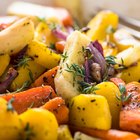
How to Roast Radishes, Parsnips, ...

If I Puree Raw Vegetables Will That ...
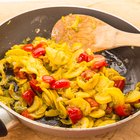
How to Saute Mixed Vegetables in Olive ...

How to Slow Cook Pork Chops & Vegetables

How to Steam Vegetables in an Electric ...
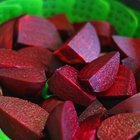
How to Cook Vegetables in a Silicone ...
How to Cook Squash & Zucchini Like a ...
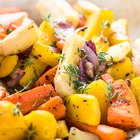
How to Cook Vegetables in a Roaster ...

How to Julienne Fennel

How to Steam Broccoli & Carrots With a ...

Nutrition Facts About Raw or Cooked ...

How to Cook a Ribeye Roast With Veggies ...
Does Slow Cooking Take Nutrients Out of ...
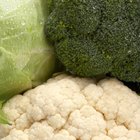
How to Steam Cauliflower & Broccoli
References
Resources
Tips
- If you’re making a vegetable medley, with an assortment of slow-, medium- and fast-cooking vegetables, start the “slow cookers” first, then add the others to ensure a consistent finish.
Writer Bio
A.J. Andrews' work has appeared in Food and Wine, Fricote and "BBC Good Food." He lives in Europe where he bakes with wild yeast, milks goats for cheese and prepares for the Court of Master Sommeliers level II exam. Andrews received formal training at Le Cordon Bleu.